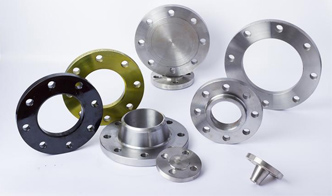-
Cangzhou Yulong Steel Co., Ltd.
-
Phone:
+86 13303177267 -
Email:
admin@ylsteelfittings.com
- English
- Arabic
- Italian
- Spanish
- Portuguese
- German
- kazakh
- Persian
- Greek
- French
- Russian
- Polish
- Thai
- Indonesian
- Vietnamese
- Zulu
- Korean
- Uzbek
- Hindi
- Serbian
- Malay
- Ukrainian
- Gujarati
- Haitian Creole
- hausa
- hawaiian
- Hebrew
- Miao
- Hungarian
- Icelandic
- igbo
- irish
- Japanese
- Javanese
- Kannada
- Khmer
- Rwandese
- Afrikaans
- Albanian
- Amharic
- Armenian
- Azerbaijani
- Basque
- Belarusian
- Bengali
- Bosnian
- Bulgarian
- Catalan
- Cebuano
- China
- China (Taiwan)
- Corsican
- Croatian
- Czech
- Danish
- Esperanto
- Estonian
- Finnish
- Frisian
- Galician
- Georgian
- Kurdish
- Kyrgyz
- Lao
- Latin
- Latvian
- Lithuanian
- Luxembourgish
- Macedonian
- Malgashi
- Malayalam
- Maltese
- Maori
- Marathi
- Mongolian
- Myanmar
- Nepali
- Norwegian
- Norwegian
- Occitan
- Pashto
- Dutch
- Punjabi
- Romanian
- Samoan
- Scottish Gaelic
- Sesotho
- Shona
- Sindhi
- Sinhala
- Slovak
- Slovenian
- Somali
- Sundanese
- Swahili
- Swedish
- Tagalog
- Tajik
- Tamil
- Tatar
- Telugu
- Turkish
- Turkmen
- Urdu
- Uighur
- Welsh
- Bantu
- Yiddish
- Yoruba

Dec . 23, 2024 18:12 Back to list
jis b2220 20k
Understanding the JIS B 2220 A Comprehensive Overview
The JIS B 2220 standard is an essential guideline in the realm of industrial standards, specifically tailored for the design and manufacturing of flanges used in piping systems. Originating from the Japanese Industrial Standards (JIS), this set of specifications provides critical dimensions, tolerances, and material properties necessary for ensuring the compatibility and safety of flange connections in various applications, including power plants, chemical industries, and general manufacturing.
Importance of JIS B 2220
The JIS B 2220 standard plays a crucial role in maintaining uniformity and reliability in flange production. In any piping system, flanges serve as crucial components that allow for the easy assembly and disassembly of pipes, while also providing robust sealing features. When flanges are designed according to JIS B 2220, it ensures that they can withstand the pressures and temperatures associated with their operating environments, thereby minimizing the risk of leaks and catastrophic failures.
Key Features of the Standard
1. Dimensions and Tolerances The JIS B 2220 standard specifies precise dimensions for different types of flanges, such as raised face flanges, flat face flanges, and others. Tolerances are also outlined to ensure that even minor deviations do not affect the overall functionality of the flange connection.
2. Material Specifications Flange materials are critical in determining their performance. The JIS B 2220 standards include guidelines on various materials that can be utilized, including carbon steel, stainless steel, and other alloys. The choice of material impacts not only the strength and durability of the flanges but also their resistance to corrosion and thermal stress.
jis b2220 20k

3. Pressure Ratings The standard categorizes flanges into different pressure classes, which indicate the maximum permissible pressure at which they can safely operate. This classification helps engineers and designers select the appropriate flange for specific applications, thereby enhancing safety and performance.
4. Testing Requirements To ensure compliance with the specifications, the JIS B 2220 includes testing requirements that manufacturers must adhere to. These tests may involve pressure testing, material verification, and dimensional accuracy checks, which help validate that the flanges meet the necessary safety and performance benchmarks.
Applications of JIS B 2220 Flanges
Flanges designed according to the JIS B 2220 standard find applications across various sectors. In the oil and gas industry, they are used in pipeline systems where high pressures and risks of corrosion are prevalent. In chemical manufacturing, these flanges help manage hazardous substances safely. Additionally, power plants rely on them for steam and water piping systems, where reliability is paramount.
Conclusion
In summary, the JIS B 2220 standard serves as a fundamental reference point for industries that rely on piping systems. By establishing clear specifications for flange design, dimensions, materials, and testing, it ensures that flanges are produced to a level that guarantees safety and performance. As industries continue to evolve and expand, adherence to such standards will remain vital in fostering innovation while assuring reliability and security in engineering practices. Understanding and implementing the JIS B 2220 guidelines is not just about compliance; it is about ensuring the integrity of systems that support our everyday life while contributing to a sustainable industrial future.
Latest news
-
ANSI 150P SS304 SO FLANGE
NewsFeb.14,2025
-
ASTM A333GR6 STEEL PIPE
NewsJan.20,2025
-
ANSI B16.5 WELDING NECK FLANGE
NewsJan.15,2026
-
ANSI B16.5 SLIP-ON FLANGE
NewsApr.19,2024
-
SABS 1123 FLANGE
NewsJan.15,2025
-
DIN86044 PLATE FLANGE
NewsApr.19,2024
-
DIN2527 BLIND FLANGE
NewsApr.12,2024
-
JIS B2311 Butt-Welding Fittings LR/SR 45°/90° /180°Seamless/Weld
NewsApr.23,2024











